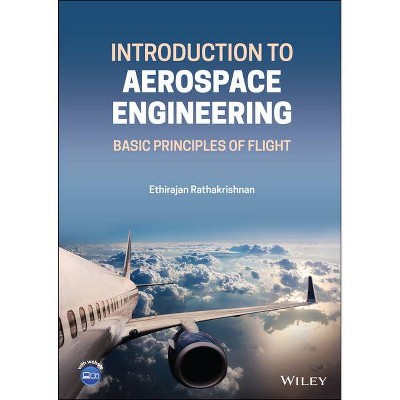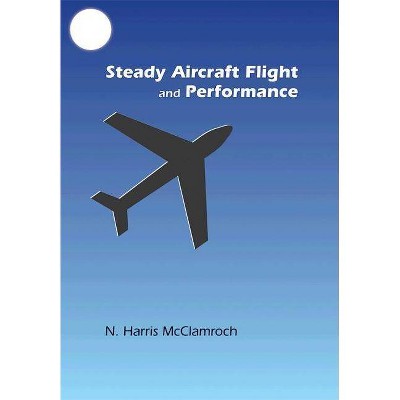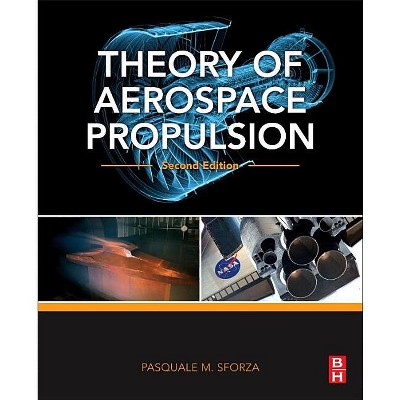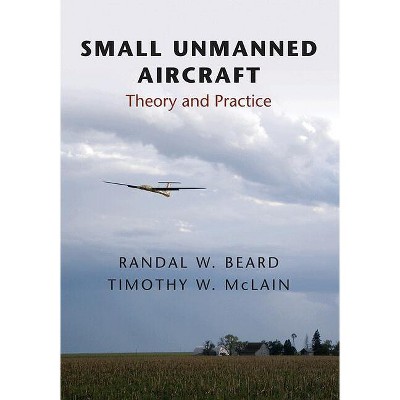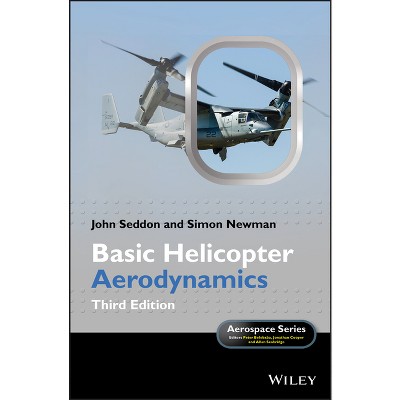Sponsored

Aircraft Aerodynamic Design - (Aerospace) by András Sóbester & Alexander I J Forrester (Hardcover)
In Stock
Sponsored
About this item
Highlights
- Optimal aircraft design is impossible without a parametric representation of the geometry of the airframe.
- About the Author: András Sóbester is a Senior Lecturer in Aeronautical Engineering at the University of Southampton.
- 272 Pages
- Technology, Aeronautics & Astronautics
- Series Name: Aerospace
Description
About the Book
"Optimal aircraft design is impossible without a parametric representation of the geometry of the airframe. We need a mathematical model equipped with a set of controls, or design variables, which generates different candidate airframe shapes in response to changes in the values of these variables. This model's objectives are to be flexible and concise, and capable of yielding a wide range of shapes with a minimum number of design variables. Moreover, the process of converting these variables into aircraft geometries must be robust. Alas, flexibility, conciseness and robustness can seldom be achieved simultaneously.Aircraft Aerodynamic Design: Geometry and Optimization addresses this problem by navigating the subtle trade-offs between the competing objectives of geometry parameterization. It beginswith the fundamentals of geometry-centred aircraft design, followed by a review of the building blocks of computational geometries, the curve and surface formulations at the heart of aircraft geometry. The authors then cover a range of legacy formulations in the build-up towards a discussion of the most flexible shape models used in aerodynamic design (with a focus on lift generating surfaces). The book takes a practical approach and includes MATLAB(r), Python and Rhinoceros(r) code, as well as 'real-life' example case studies.Key features: Covers effective geometry parameterization within the context of design optimization Demonstrates how geometry parameterization is an important element of modern aircraft design Includes code and case studies which enable the reader to apply each theoretical concept either as an aid to understanding or as a building block of their own geometry model Accompanied by a website hosting codes Aircraft Aerodynamic Design: Geometry and Optimization is a practical guide for researchers and practitioners in the aerospace industry, and a reference for graduate and undergraduate students in aircraft design and multidisciplinary design optimization"--Book Synopsis
Optimal aircraft design is impossible without a parametric representation of the geometry of the airframe. We need a mathematical model equipped with a set of controls, or design variables, which generates different candidate airframe shapes in response to changes in the values of these variables. This model's objectives are to be flexible and concise, and capable of yielding a wide range of shapes with a minimum number of design variables. Moreover, the process of converting these variables into aircraft geometries must be robust. Alas, flexibility, conciseness and robustness can seldom be achieved simultaneously.
Aircraft Aerodynamic Design: Geometry and Optimization addresses this problem by navigating the subtle trade-offs between the competing objectives of geometry parameterization. It beginswith the fundamentals of geometry-centred aircraft design, followed by a review of the building blocks of computational geometries, the curve and surface formulations at the heart of aircraft geometry. The authors then cover a range of legacy formulations in the build-up towards a discussion of the most flexible shape models used in aerodynamic design (with a focus on lift generating surfaces). The book takes a practical approach and includes MATLAB(R), Python and Rhinoceros(R) code, as well as 'real-life' example case studies.
Key features:
- Covers effective geometry parameterization within the context of design optimization
- Demonstrates how geometry parameterization is an important element of modern aircraft design
- Includes code and case studies which enable the reader to apply each theoretical concept either as an aid to understanding or as a building block of their own geometry model
- Accompanied by a website hosting codes
Aircraft Aerodynamic Design: Geometry and Optimization is a practical guide for researchers and practitioners in the aerospace industry, and a reference for graduate and undergraduate students in aircraft design and multidisciplinary design optimization.
From the Back Cover
Optimal aircraft design is impossible without a parametric representation of the geometry of the airframe. We need a mathematical model equipped with a set of controls, or design variables, which generates different candidate airframe shapes in response to changes in the values of these variables. This model's objectives are to be flexible and concise, and capable of yielding a wide range of shapes with a minimum number of design variables. Moreover, the process of converting these variables into aircraft geometries must be robust. Alas, flexibility, conciseness and robustness can seldom be achieved simultaneously!
Aircraft Aerodynamic Design: Geometry and Optimization addresses this problem by navigating the subtle trade-offs between the competing objectives of geometry parameterization. It begins with the fundamentals of geometry-centred aircraft design, followed by a review of the building blocks of computational geometries, the curve and surface formulations at the heart of aircraft geometry. The authors then cover a range of legacy formulations in the build-up towards a discussion of the most flexible shape models used in aerodynamic design (with a focus on lift generating surfaces). The book takes a practical approach and includes MATLAB, Python and Rhinoceros(R) code, as well as 'real-life' example case studies.
Key features:
- Covers effective geometry parameterization within the context of design optimization
- Demonstrates how geometry parameterization is an important element of modern aircraft design
- Includes code and case studies which enable the reader to apply each theoretical concept either as an aid to understanding or as a building block of their own geometry model
- Accompanied by a website hosting codes
Aircraft Aerodynamic Design: Geometry and Optimization is a practical guide for researchers and practitioners in the aerospace industry and a reference for graduate and undergraduate students in aircraft design and multidisciplinary design optimization.
Review Quotes
"The book is generally well written and easy to read, with a pleasing use of aircraft photographs to illustrate the text." (The Aeronautical Journal, 1 April 2015)
"Aircraft Aerodynamic Design: Geometry and Optimization is a practical guide for researchers and practitioners in the aerospace industry, and a reference for graduate and undergraduate students in aircraft design and multidisciplinary design optimization." (Expofairs.com, 7 January 2015)
About the Author
András Sóbester is a Senior Lecturer in Aeronautical Engineering at the University of Southampton. Beyond aircraft geometry parameterization, his research interests include design optimization techniques (in particular, evolutionary algorithms, machine learning systems and surrogate model-assisted search heuristics), high altitude flight (on fixed wings or balloon-borne) and the use of additive manufacturing techniques in aircraft design.
In terms of applying these technologies, his main focus is on the design of high altitude unmanned air vehicles for scientific applications. He leads the ASTRA (Atmospheric Science Through Robotic Aircraft) initiative, which aims to develop high altitude unmanned air systems for meteorological and Earth science research. Previous work includes research into reducing the environmental impact of passenger airliners through unconventional airframe geometries, undertaken as part of a Royal Academy of Engineering (RAEng) Research Fellowship.
András also lectures on the University's Aeronautical Engineering undergraduate course - he leads the Aircraft Operations and Mechanics of Flight, and the Aircraft Design modules.
Alexander I. J. Forrester was born and brought up in Wirksworth, Derbyshire in the north of England. He studied for a Masters in aerospace engineering, followed by a PhD in computational engineering at the University of Southampton where he is now a Senior Lecturer.
He is a member of the Computational Engineering and Design Research Group and the Institute for Life Sciences. His research interests lie in the efficient use of simulation and experiments in design optimization.
Alex leads the teaching of engineering design across the University's Mechanical, Aeronautical and Ship Science first-year undergraduate courses. He also teaches design optimization to postgraduate level and supervises the University's undergraduate-developed human powered aircraft.
Shipping details
Return details
Frequently bought together

Trending Computers & Technology Books











